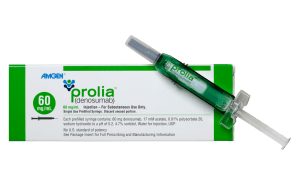 National Nurses Day, celebrated this year as part of National Nurses Week from May 6-12, honors the role nurses play in healthcare. This week-long celebration, established by the American Nurses Association (ANA), also marks the anniversary of the birth of Florence Nightingale, a pioneer in nursing. Events like National Student Nurses Day and School Nurse Day, celebrated in the middle of National Nurses Week, further highlight the diverse contributions of registered nurses and school nurses. The International Council of Nurses also recognizes International Nurses Day to emphasize the global impact of nurses. Through these recognition days, we celebrate and honor the dedication of nurses who make a difference in healthcare every day. Today, let’s look at some remarkable nurses who have made an incredible difference to healthcare throughout history.
National Nurses Day, celebrated this year as part of National Nurses Week from May 6-12, honors the role nurses play in healthcare. This week-long celebration, established by the American Nurses Association (ANA), also marks the anniversary of the birth of Florence Nightingale, a pioneer in nursing. Events like National Student Nurses Day and School Nurse Day, celebrated in the middle of National Nurses Week, further highlight the diverse contributions of registered nurses and school nurses. The International Council of Nurses also recognizes International Nurses Day to emphasize the global impact of nurses. Through these recognition days, we celebrate and honor the dedication of nurses who make a difference in healthcare every day. Today, let’s look at some remarkable nurses who have made an incredible difference to healthcare throughout history.
Florence Nightingale (1820–1910)
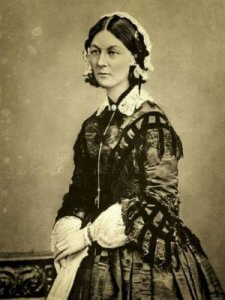
Florence Nightingale, often considered the founder of modern nursing, was born into a wealthy English family. In her twenties, she decided to pursue a career in nursing, despite strong opposition from her mother and sister, who believed she should follow the traditional path of becoming a wife and mother, as was expected for women of her social status. Nightingale remained determined, driven by what she described as a divine calling to the profession.
During the Crimean War, Nightingale gained recognition for her efforts. Accompanied by a team of 38 volunteer nurses, she arrived at a military hospital in Scutari and was confronted with appalling conditions among the British soldiers. Diseases such as typhus, cholera, and dysentery were claiming more lives than battlefield injuries. In response, Nightingale implemented groundbreaking measures to improve sanitation and hygiene, including the practice of handwashing with soap and water, which was uncommon at the time.
For the next forty years, Florence Nightingale worked tirelessly to establish nursing as a respected profession in England and around the world. She opened the first professional nursing school, and her book, Notes on Nursing, served as a key resource for both nursing students and women caring for family members at home. Nightingale was also a trailblazer in the use of statistics, using pie charts to demonstrate how advancements in nursing practices improved patient health.
Mary Breckenridge (1881–1965)
Breckenridge played a role in the development of nurse-midwifery and a healthcare system for rural areas in eastern Kentucky. Breckenridge, who had studied French during her time at a Swiss boarding school, volunteered in France after World War I to help organize relief efforts for children and pregnant women. In 1921, she returned to the United States and decided to further her education in public health to assist impoverished families in eastern Kentucky. While working there, she encountered midwives who were informally trained, but she felt the need to gain formal training herself. Since no midwifery programs were available in the United States at the time, she traveled to England, where she earned her certification.
In the rural Scottish Highlands, Breckenridge visited several established nursing stations, which inspired her to create a similar network upon her return to Kentucky in 1925. She later founded the Kentucky Committee for Mothers and Babies, which evolved into the Frontier Nursing Service (FNS) in 1928. Alongside other midwives from London, she traveled the region on horseback, offering general healthcare, prenatal and postnatal care, and assistance with childbirth. By using the midwifery model of care, Breckenridge proved that trained professionals could significantly reduce infant and maternal mortality rates. By the time of her death in 1965, the FNS, which she continued to lead throughout her life, had delivered over 14,500 babies with only 11 maternal deaths.
Clara Barton (1821–1912)
Clara Barton, born in Massachusetts in 1821, was a quiet yet academically talented child. Her introduction to nursing occurred during her youth when her brother David suffered a serious injury after falling from a barn roof. For two years, she cared for him, administering doctor-prescribed medicines and using leeches, a standard medical practice at the time, to aid his recovery.
During the Civil War, Barton found herself drawn back to nursing. Her efforts began in Washington, D.C., where she cared for soldiers transported by train after a riot in Baltimore. As the war continued, she took on the role of a battlefield nurse, providing medical supplies, treating wounds, and gaining public support for nurses working near the front lines. Union General Benjamin Butler later placed her in charge of army hospitals. Her dedication earned her the title “Florence Nightingale of America.”
Following the war, Barton visited Geneva, Switzerland, where she discovered the Red Cross, a humanitarian organization. One of the founders encouraged her to establish an American branch of the group. Barton succeeded in doing so after persuading President Chester Arthur that the organization would assist not only with battlefield emergencies but also with natural disasters such as floods and earthquakes.
Mary Eliza Mahoney (1845–1926)
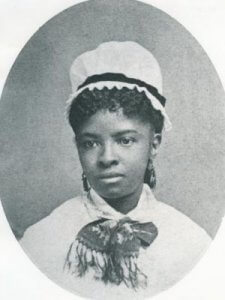
Mary Eliza Mahoney is recognized as the first African American woman to earn a nursing license, though she was not the first to serve as a nurse in the United States. Harriet Tubman, for example, worked as a Union Army nurse, caring for Black soldiers during the Civil War. During Mahoney’s time, opportunities for Black women to pursue a nursing education were extremely scarce, even in Massachusetts, where she lived. Despite these challenges, she was accepted into a 16-month program at the New England Hospital for Women and Children, where she had previously worked in roles such as cook, maid, and washerwoman.
Following a rigorous program of lectures and hands-on clinical work in both hospital wards and private homes, Mahoney successfully graduated in 1879. Out of a class of 40 students, only she and two other candidates completed the program.
Mahoney dedicated much of her career to working as a private nurse, where she became known for her efficiency and preparedness. She fought to be recognized as a professional rather than a servant and strongly supported equal treatment for all nurses in the profession. Although she was one of the founding members of the organization that eventually became the American Nurses Association, she parted ways with the group due to its lack of inclusivity toward nurses of color. In response, Mahoney, along with two other Black nurses, established the National Association of Colored Graduate Nurses, an organization that welcomed nurses of all races.
Lillian Wald (1867–1940)
Wald began pursuing her interest in nursing by enrolling in the New York Hospital Training School for Nurses in 1891. After completing her training, she continued her studies and eventually worked in the Lower East Side of New York City, assisting immigrant families living in tenement housing. Deeply committed to her work, she decided to move into the neighborhood to remain close to the community she served.
Her strong connection to the community inspired her to create the term “public health nurse.” She went on to serve as the first president of the National Organization for Public Health Nursing and was a pioneer in promoting the role of nurses in public schools.
Her lasting legacy was the establishment of the Henry Street Settlement, an organization that offered healthcare while also providing support for women and children. It upheld the belief that everyone deserves access to quality healthcare at home, delivered with respect, regardless of their financial situation.
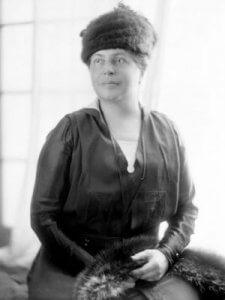
Virginia Avenel Henderson (1897–1996)
Henderson came to be recognized as the “First Lady of Nursing” for her influential contributions to nursing theory, which became a cornerstone of nursing education. She described the role of a nurse as assisting individuals, whether sick or healthy, in carrying out activities that promote health, recovery, or a peaceful death. Her approach emphasized helping patients regain independence as quickly as possible.
She revised a nursing textbook titled Textbook of the Principles and Practices of Nursing, which went on to become a key resource in hospital nursing schools throughout the United States. She also supervised the creation of a four-volume reference guide known as the Nursing Studies Index, which compiled nursing research papers published from 1900 to 1960.
Henderson was recognized for her groundbreaking contributions as a nurse educator, public health nurse, researcher, and theorist. She was honored with an induction into the American Nurses Association Hall of Fame and received the Christiane Reimann Prize from the International Council of Nurses.
Dorothea Dix (1802–1887)
Dorothea Dix, though not formally trained as a nurse, made a significant impact on the care of impoverished and mentally ill individuals in the United States and other countries. She broke barriers in multiple areas, beginning her work as an educator for young girls who were excluded from public schools at the time, and later becoming a dedicated advocate for those in need.
Dorothea Dix traveled across the United States and Europe, uncovering the harsh and inhumane conditions faced by impoverished individuals with mental illnesses, both in prisons and in their communities. She dedicated years of her life to raising awareness about this issue and advocating for legislative changes. Her efforts led to significant reforms, including the establishment of government-funded mental hospitals. Overall, Dix played a key role in founding 32 mental hospitals in 15 states and contributed to the creation of two additional facilities in Japan.
Loretta C. Ford (1920–2025)
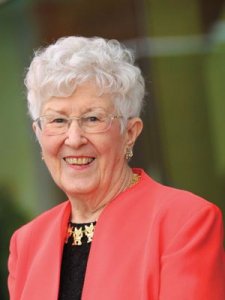
Ford is recognized as one of the most impactful leaders in nursing history due to her role in co-founding the first nurse practitioner program alongside Dr. Henry Silver. During the 1960s, while working in the public health nursing program at the University of Colorado, she trained nursing students through the Denver Visiting Nurse Service. It was during this time that she identified a significant gap in access to primary care within the communities they served.
In 1965, Ford introduced a program at the University of Colorado that aimed to equip nurses with the skills needed to provide essential care. The curriculum combined medical training from physicians with traditional nursing education, creating a specialized approach to nurse training.
Ford’s achievements have led to her induction into the Women’s Hall of Fame, as well as receiving the Surgeon General’s Medallion, the highest civilian honor awarded by the U.S. Public Health Service.
FAQs
Why is Nurses’ Day on May 6th?
Every year on May 6, we celebrate National Nurses Day, kicking off National Nursing Week. This week-long event runs until May 12, which is Florence Nightingale’s birthday.
What is the symbol of Nurses’ Day?
In healthcare, the caduceus symbolizes the vital role nurses play as caregivers, mediators, and advocates for healing. The emblem features two serpents coiled around a staff, often depicted with wings in certain designs.
How do you wish someone a happy Nurses’ Day?
You can wish someone a happy Nurses’ Day by sending them a card, giving them a small gift, or simply saying “Happy Nurses’ Day!” in person or through a message. You can also show your appreciation by thanking them for their hard work and dedication to healthcare.
How do you celebrate National Nurses Week?
In 2025, the “Nurses Light Up the Sky” campaign aims to honor nurses by illuminating 100 buildings, landmarks, and monuments across the country during National Nurses Week. Building on last year’s success, where 85 locations were lit, the initiative seeks to celebrate the contributions of nurses, raise community awareness, generate media attention, and inspire social sharing. These illuminated landmarks will also serve as gathering spots for local events and activities during the week. The American Nurses Association encourages the public to suggest notable sites by emailing NursesWeek@ana.org and invites everyone to join the celebration in May by sharing photos and using the hashtags #ThePowerOfNurses and #NursesLightUpTheSky.







